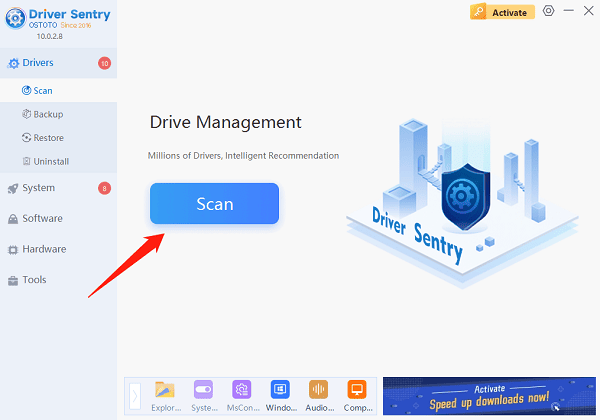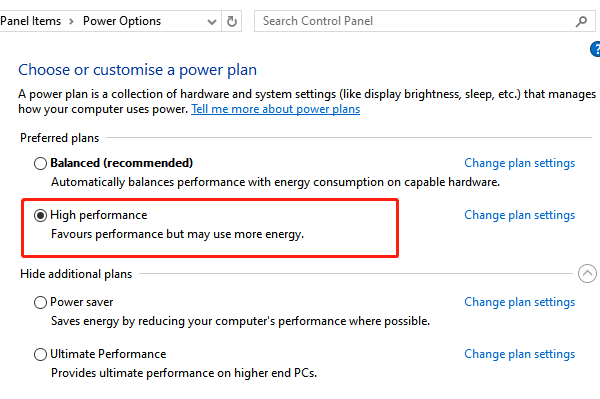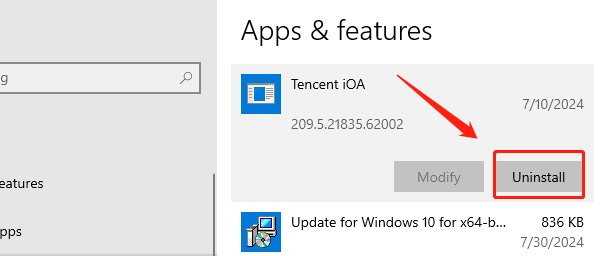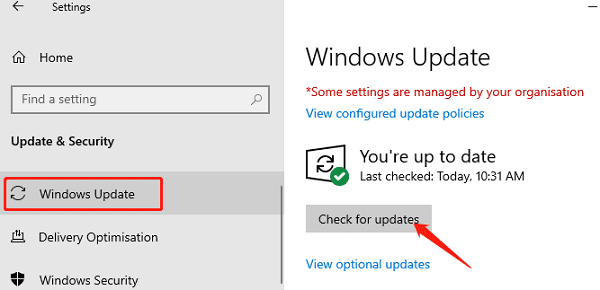
In everyday computer use, many users may encounter screen flickering issues with their monitors. This article provides some effective solutions to help you quickly restore normal display performance.
1. Check Monitor Connection Cable
Ensure the monitor cable (such as HDMI, VGA, or DisplayPort) is securely connected to both the computer and monitor, as loose connections can cause display issues.
If possible, try using a different cable to rule out any issues due to cable wear or damage.
Examine the computer and monitor ports to ensure no dust or debris is affecting the connection.
2. Update Graphics Driver
Outdated or incompatible graphics drivers are a common cause of monitor flickering, and updating the driver can help prevent such issues. Using software like Driver Sentry can automatically detect and update drivers, saving time and reducing the risk of errors.
Download the latest version of Driver Sentry and install it, then open the software and click "Scan".

After scanning, the software will display any missing or outdated drivers. Locate the graphics driver in the list and click "Upgrade".
Once updated, restart the computer to ensure the driver changes take effect.
3. Adjust Refresh Rate
Right-click on the desktop and select "Display Settings".
In the settings window, click on "Advanced Display Settings" and then select "Display Adapter Properties".
Under the "Monitor" tab, choose a refresh rate that matches your monitor specifications (such as 60Hz or higher, depending on the monitor).

After adjusting, click "Apply" to confirm changes and see if the flickering issue is resolved.
4. Check Power Settings
Click "Start" and go to "Settings" > "System" > "Power & Sleep".
Click "Additional Power Settings" and choose the "High Performance" plan to avoid display issues caused by power-saving modes.

In the "Power & Sleep" settings, adjust screen and sleep timers to prevent the monitor from frequently turning off during use.
5. Check Monitor and Computer Compatibility
Review the specifications of both the monitor and graphics card to ensure they're compatible.
If possible, connect a different monitor to check if the same issue persists, to determine whether it's a compatibility issue or specific to the monitor.
6. Uninstall Problematic Applications
Go to "Start", select "Settings" > "Apps".
In the "Apps & Features" list, locate recently installed programs, especially those affecting display settings, and click "Uninstall".

After uninstalling, restart the computer to check if the display issue has been resolved.
7. Run System Updates
Click "Start", select "Settings" > "Update & Security" > 'Windows Update".
Click "Check for updates" and wait for the system to complete the search. Download and install any available updates.

After updating, restart the computer to apply the changes.
8. Check for Hardware Faults
Connect the monitor to another computer to see if the same issue occurs, ruling out hardware malfunctions.
If using a dedicated graphics card, ensure the card is securely connected, and clean the card and motherboard slot.
Following these steps can help you systematically troubleshoot and resolve common display or resolution issues. If the issue persists, professional hardware diagnostics may be needed.
See also:
How to Fix Laptop WiFi Connection Issues